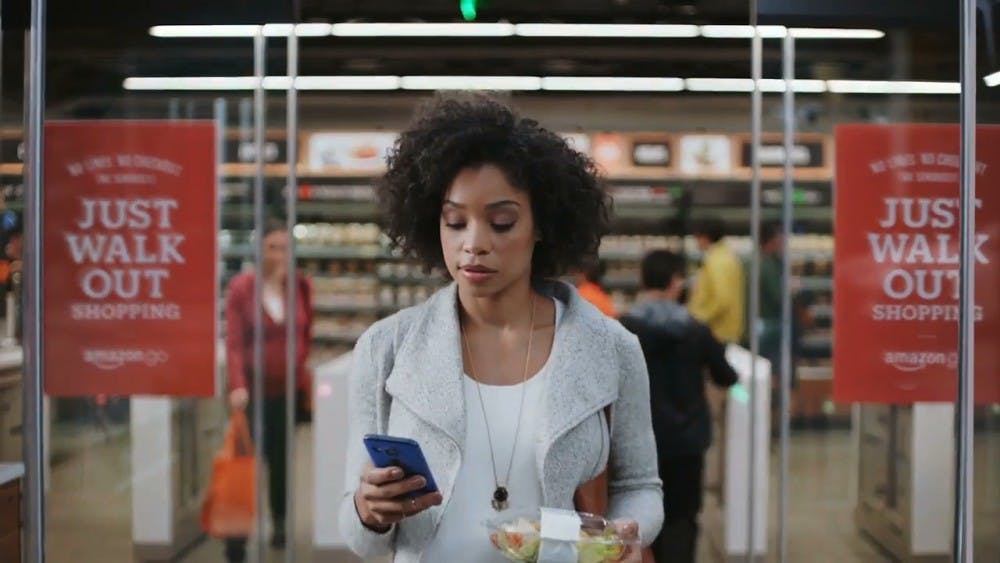Two months ago, Amazon.com released a video that would change the world simply by alluding to the possibility of futuristic advancements in shopping technology. The promo, found here, very outwardly lays out a plan for Amazon’s final frontier: the fundamentally physical world of offline retail. Clearly this fact alone provides shock value in and of itself, considering Amazon has established itself as the premiere online retailer, competing closely with offline giants like Wal-Mart, Best Buy and the like.
Since its release, the video has garnered over 8.4 million views and Amazon stock has steadily risen.
But the more aggressively alarming debut featured in the movie is that of the “Just Walk Out Shopping” bit. At this point in the video, the average consumer is met with the usual dilemma of shopping: the transaction. Whereas this usually requires two people interacting and a physical transferal of product and currency, Amazon Go works off of its founding site’s ease of access by allowing the customer to pay for their product by simply walking out of the store. It is unclear how this whole action takes place, but the video proposes that consumers will have their accounts automatically linked to the store when they enter, allowing for a seamless shopping experience on the exit. It’s a real stab at innovation and re-tuning an already well-tuned scene, and it’s surely not a miss.
Moreover, the company has advertised the innovativeness effectively. CEO Jeff Bezos didn’t hold a press conference. There were no extravagant opening soirees to kick things off. Instead, the company relied solely on the characteristic that has distinguished itself from the rest since day one: its internet presence. By disabling the comments on the video and refusing to release any consequential information beyond a vague "Coming early 2017" at the end of the video, Amazon had allowed anticipatory energy to fester with no indication of when it’ll be realized.
Still, critics would imply that the public isn’t yet ready for such a feat, or the innovation isn’t useful. But those critics would be missing a pivotal point in Amazon’s business strategy thus far: to make its industry what they want it to be, and let others acclimate afterward.
There is no meeting consumers halfway. There is only a Fortune 500 corporation installing economic evolution and then leaving it up to its devoted customers to react.
As for if the market is ready for a change, the retail industry, though malleable enough, has been the same since its infancy. It was destined to change with the internet, and it has already, with regards to Amazon and companies like it. They were entrusted with that shift then, so it only stands to reason that they are now. Regardless of permission, they are clearly geared toward doing so. The future of retail will fall into our laps, or shopping carts, given enough time. We need only wait and see.

